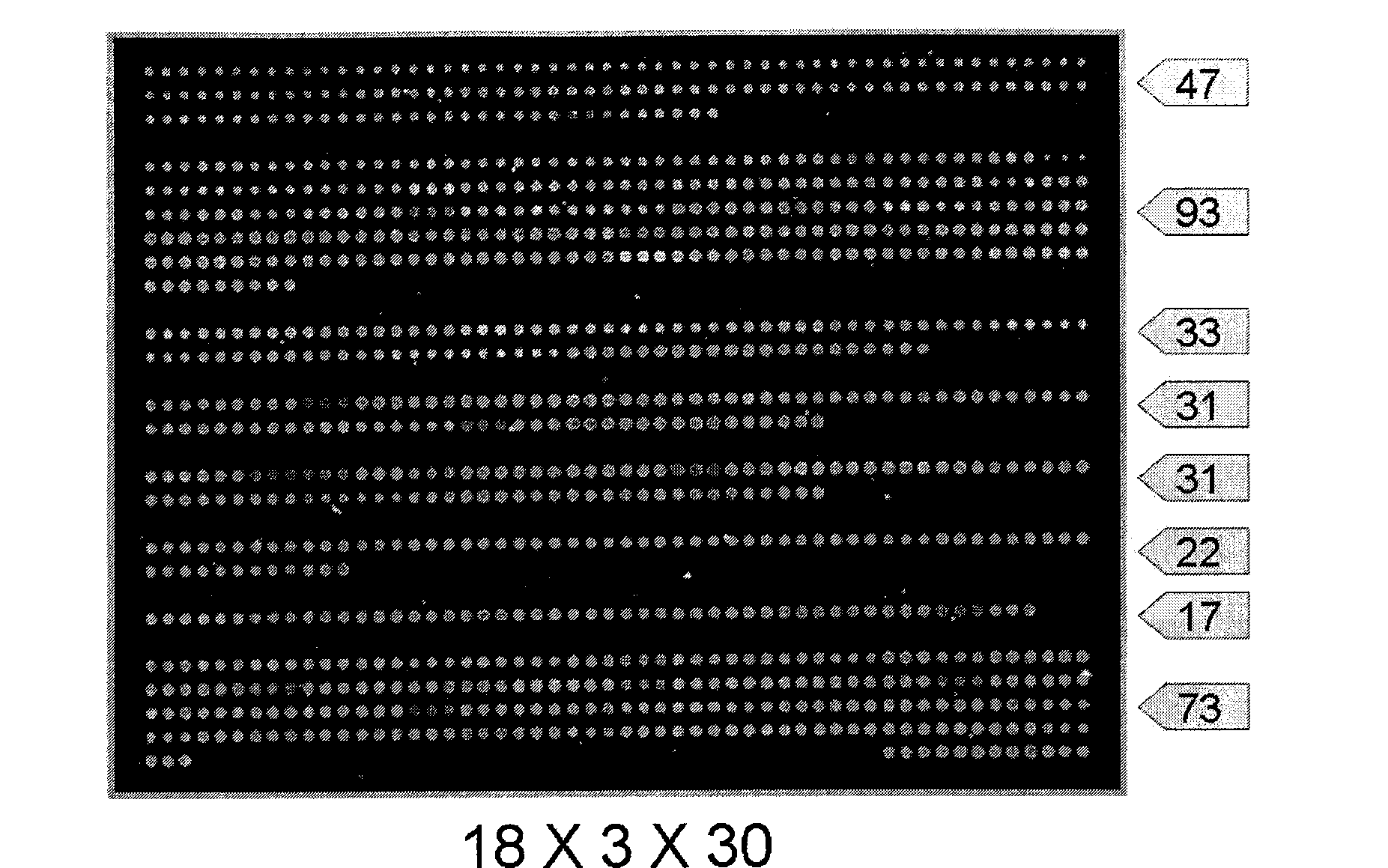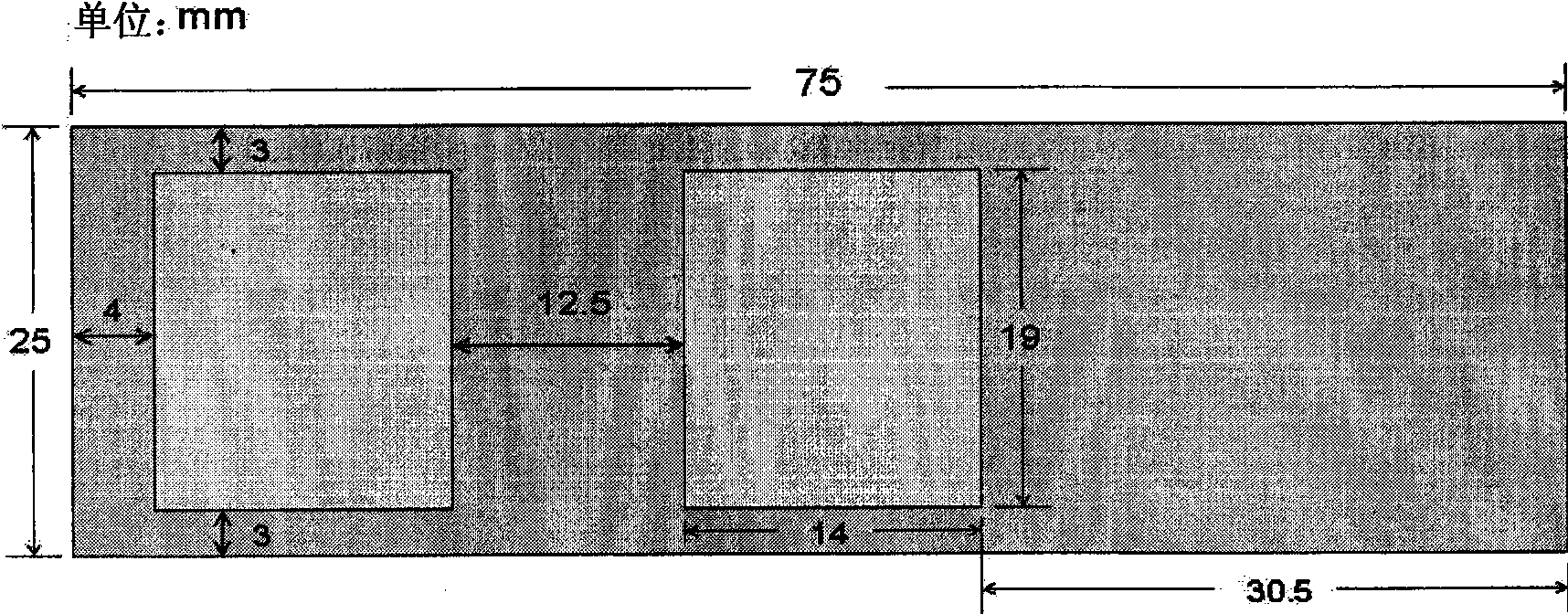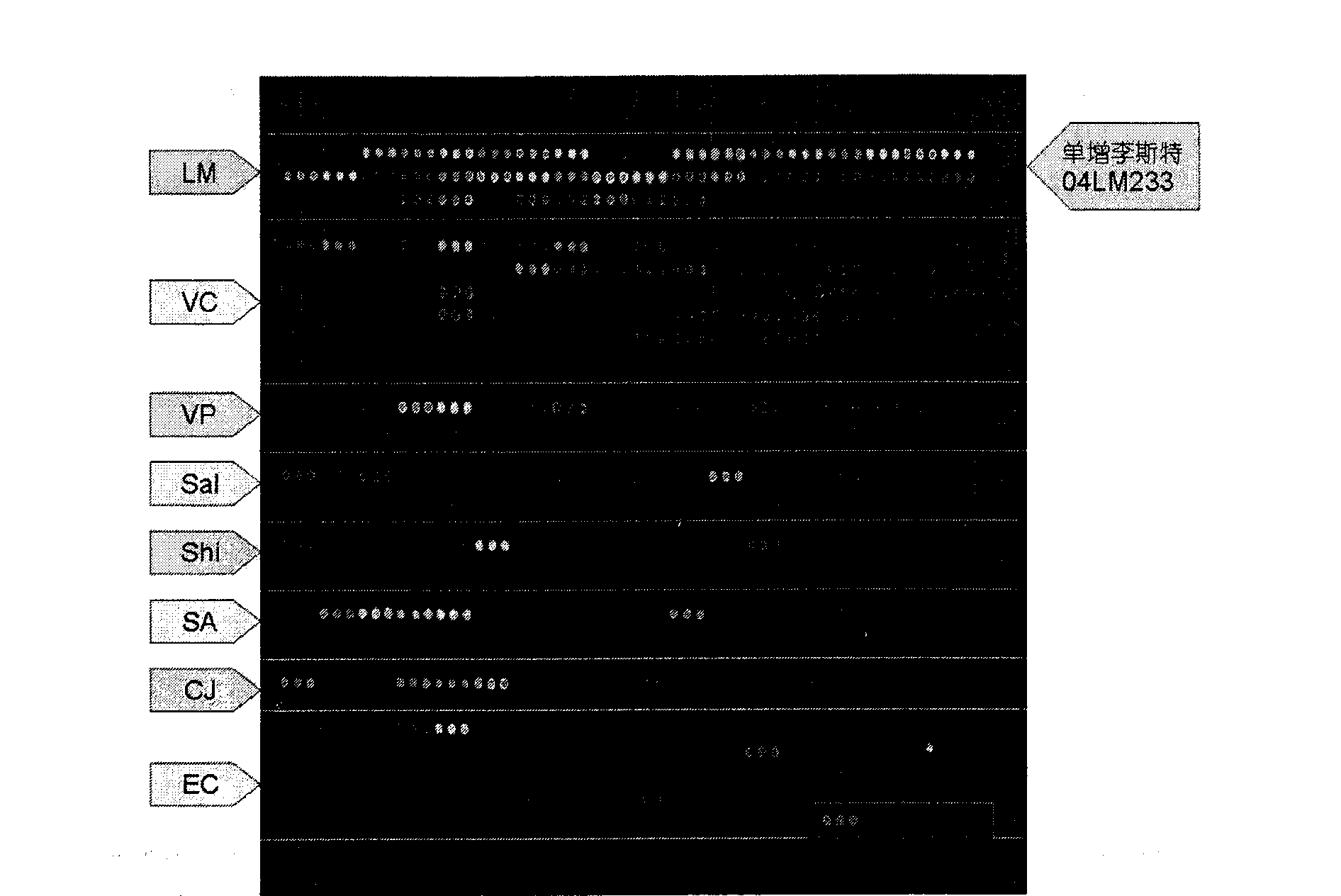Composite gene chip for food-borne pathogenic bacteria detection
A technology of food-borne pathogenic bacteria and gene chip, which is applied in the detection/testing of microorganisms, resistance to vector-borne diseases, biochemical equipment and methods, etc. It reflects the characteristics of high-throughput and high-information content of the gene chip, etc.
- Summary
- Abstract
- Description
- Claims
- Application Information
AI Technical Summary
Problems solved by technology
Method used
Image
Examples
Embodiment Construction
[0050] 1. Determination of target strains for gene chip detection
[0051] The present invention intends to select 8 kinds of food-borne pathogens that are relatively common in Guangdong Province from the above-mentioned strains for the development of detection gene chips. Vibrio haemolyticus (VP), Salmonella (Sal), Shigella (Shi), Staphylococcus aureus (SA), Campylobacter jejuni (CJ) and Escherichia coli (EC).
[0052] Sample source: All bacterial strains are from the germ bank of Guangdong Provincial Center for Disease Control and Prevention.
[0053] Hereinafter, the oligonucleotide detection gene chip developed for these 8 food-borne pathogens will be named "Biosafood-8 chip".
[0054] 2. Design of Oligo probe
[0055] A total of 351 probes were designed for 89 detection target genes of 8 food-borne pathogenic bacteria, including 1 positive control probe and 3 negative control probes (Table 4-1). The gene chip detection probes designed for 8 kinds of food-borne pathogenic bacteria...
PUM
 Login to View More
Login to View More Abstract
Description
Claims
Application Information
 Login to View More
Login to View More - R&D
- Intellectual Property
- Life Sciences
- Materials
- Tech Scout
- Unparalleled Data Quality
- Higher Quality Content
- 60% Fewer Hallucinations
Browse by: Latest US Patents, China's latest patents, Technical Efficacy Thesaurus, Application Domain, Technology Topic, Popular Technical Reports.
© 2025 PatSnap. All rights reserved.Legal|Privacy policy|Modern Slavery Act Transparency Statement|Sitemap|About US| Contact US: help@patsnap.com



